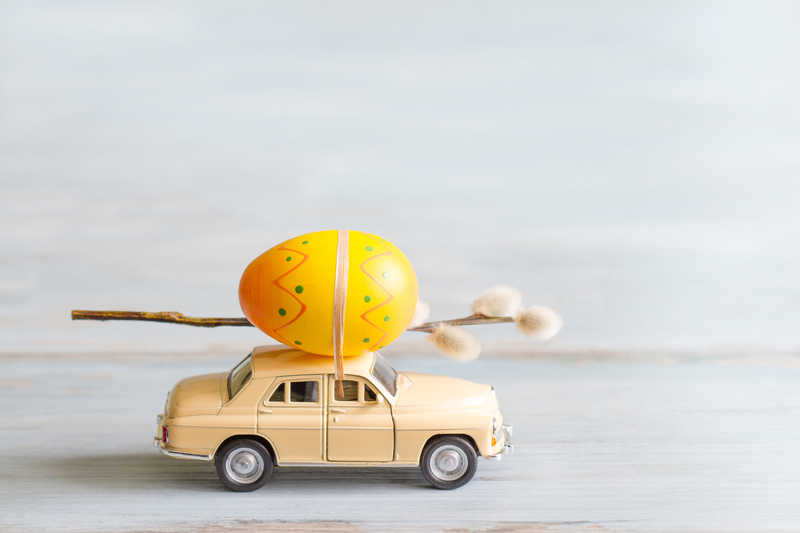The Hidden Dangers of Moving a Piano by Yourself
Pianos are magnificent musical instruments--centerpieces of many households, symbols of musical tradition, and valuable investments. However, when it comes to relocating them, the task is far from simple. Many people underestimate the risks of moving a piano without professional help. In this comprehensive guide, we explore the various dangers associated with DIY piano moves, offering insights and advice to help you make informed decisions for both your safety and the instrument's preservation.

Understanding the Complexity of Piano Relocation
Before delving into the perils of moving a piano on your own, it's important to appreciate what sets this task apart from typical furniture relocation.
1. The Sheer Weight and Size of Pianos
- Grand pianos: These can weigh between 500 to 1,200 pounds and range from 4.5 to 9 feet in length.
- Upright pianos: Weighing 300 to 800 pounds, their tall frames present unique handling difficulties.
- Digital pianos and spinets: While lighter, they can still be awkward and precious to handle.
Moving such a bulky and heavy instrument requires far more than muscle power--it demands knowledge, the right equipment, and ample experience.
2. The Intricate Mechanism Inside
A piano is not only heavy, it is also fragile. Contained within its shell are thousands of parts that work in harmony:
- Delicate strings and hammers
- Sensitive keys and pedals
- The finely-tuned soundboard
A single misstep when moving can cause irreversible internal damage, drastically affecting both sound and value.
Why People Attempt DIY Piano Moving
Why do so many individuals attempt the daunting task of self-moving a piano? Common motivations include:
- Saving money by avoiding professional movers
- Overconfidence in personal strength or moving experience
- Misjudging the complexity involved
- Tight moving schedules
Unfortunately, these rationales can pave the way for significant regrets down the line. Let's examine the concealed dangers you may not have considered.
Physical Risks Associated with DIY Piano Moving
1. Personal Injuries: The Number One Threat
Perhaps the most alarming danger is the risk of serious injuries:
- Back injuries: Attempting to lift or maneuver a piano can cause strains, slipped discs, and chronic pain.
- Crushed fingers and toes: Mishandling during loading or unloading can lead to fractures or even amputations.
- Cuts, scrapes, and bruises: Edges, pedals, and even external hardware can cause wounds--especially if the instrument slips.
- Falls and trips: Navigating stairs, ramps, and narrow hallways with an awkward object raises the risk of falls.
Most notably, amateur movers rarely possess the right protective gear or team coordination to safely share the physical load, increasing these risks exponentially.
2. Strains on Muscles and Joints
Even if apparent injury is avoided, strain-induced fatigue can set in quickly. Pianos must often be maneuvered around corners, through doorways, and over uneven surfaces. The awkward, shifting weight can:
- Overexert muscles in the arms, back, and legs
- Cause joint inflammation in wrists and knees
- Lead to long-term repetitive strain injuries
These hidden health hazards may not become obvious until hours--or days--after the move.
3. Risk to Helpers and Family Members
Enlisting the help of friends or family can introduce additional dangers. Inexperience, lack of communication, and differing strength levels can lead to coordinated accidents, where multiple people may be harmed by a single misstep.
Threats to the Piano Itself
1. External Damage: Scratches, Dents, and Chipped Finishes
Pianos are valuable not just for their sound, but their aesthetic appeal. Unfortunately, they're also prone to:
- Deep scratches and gouges from tight doorways
- Dented corners from bumps against walls or floors
- Chipped legs and pedals from improper lifting
- Finish damage from adhesives or packing materials
Such cosmetic damage can drastically reduce your piano's resale value and visual appeal, requiring expensive restorative work.
2. Internal Harm: Misalignment and Broken Components
The interior of a piano is extraordinarily sensitive. Major blunders include:
- Tipped over instruments: This may cause frame warping, soundboard cracks, or string dislodgment
- Sustained vibrations or shocks: Even minor jostling can misalign the action mechanism or damage tuning pins
- Moisture exposure: Storing the piano in a non-climate-controlled truck or area can harm wood and felt parts
What's worse, internal piano damage is rarely visible immediately and often reveals itself during play, souring your musical enjoyment long after the move ends.
3. Tuning and Performance Problems
Even the most careful relocation typically knocks a piano out of tune. However, improper handling can result in:
- Permanent tuning instability
- Lost resonance
- Buzzing, rattling, or uneven key response
Professional piano movers generally advise a post-move tuning session, but DIY disasters can make tuning impossible--or cost-prohibitive.
Household Damage: Collateral Consequences
Beyond the risk to yourself and the piano, there's the significant possibility of damaging your home during a move:
- Gouged wooden floors or carpet rips from dragging or dropping a piano
- Dented walls and door frames in tight spaces
- Broken steps or strained stair banisters when moving heavy pianos up or down stairs
- Scratched tiles and smashed baseboards
The cost to repair these types of damage can quickly surpass what it would have cost to hire a professional mover in the first place.
Wrong Tools and Lack of Protective Equipment
1. Essential Equipment You're Likely Missing
Piano professionals use an arsenal of specialized gear. Most DIY movers lack access to:
- Heavy-duty piano dollies and skid boards
- Secure piano straps and padding materials
- Protective corner guards and ramps
- Moving blankets specifically designed for large instruments
- Proper gloves and steel-toed shoes
The absence of such equipment increases the likelihood of slips, drops, and injuries.
2. Lack of Moving Experience
Moving a heavy, fragile, and awkwardly-shaped object beautifully requires more than just strength. Professional piano movers:
- Plan every turn, hallway, and stairwell ahead of time
- Properly disassemble components when needed
- Securely wrap and pad the instrument
- Lift and balance weight correctly to prevent sudden shifts
Without these skills, your move becomes a risky gamble.
Liability and Insurance Risks
1. No Accident Coverage
When moving a piano by yourself, you assume legal and financial responsibility for all related accidents. If someone is injured or property is damaged, you may face medical bills, repair costs, or lawsuits without recourse.
2. Lack of Piano Insurance
Professional movers often provide specialized insurance protecting your piano during transit. If you damage the piano during a DIY move, your homeowner's policy may not cover replacement or repair costs.
Environmental Factors and Moving Conditions
1. Weather Woes
Rain, snow, or extreme heat can complicate the self-moving of a piano:
- Slippery stairs and walkways increase accident risks
- High humidity can damage the piano's wood and felt
- Sudden temperature changes may warp internal components
Professional movers plan for these contingencies; amateurs often do not.
2. Vehicle Issues
Most rental trucks and pickup beds are inadequate for safe piano transport. Professional moving vehicles feature:
- Climate control
- Shock-absorbing suspension
- Securing points for straps and padding
Ineffective vehicle choices can increase the risk of in-transit damage or outright loss.
Financial Consequences of Piano Self-Moves
The Cost of 'Saving Money'
While hiring professionals may seem costly, the potential expenses from a DIY move gone wrong include:
- Medical bills from injuries
- Repairs to the instrument or home
- Replacement of lost or damaged parts
- Professional re-tuning or restoration services
In some cases, these costs may dramatically exceed the price of professional piano moving services.
The Case for Expert Help: Why Hire Professional Piano Movers?
Benefits of Professional Services
- Extensive experience and training
- Specially designed equipment and packing materials
- Insurance coverage for peace of mind
- Efficient handling, reducing time and effort
- Safe navigation of challenging environments such as stairs, tight spaces, and busy streets
Entrusting your valuable instrument to experts is a wise investment that protects your property, family, and musical future.

Tips for a Safe Piano Move (If You Must DIY)
If you're still determined to move your piano yourself, heed these precautions:
- Gather the right moving equipment: dollies, straps, moving blankets, and gloves.
- Assemble a strong team with clear communication and assigned roles.
- Measure all spaces--doorways, hallways, staircases--ahead of time.
- Disassemble parts (legs, pedals) if possible to reduce risk and weight.
- Protect floors and corners with padding.
- Keep the piano upright at all times to avoid internal damage.
- Move slowly, taking breaks, and never rush through tight spaces.
- Plan for immediate post-move tuning and inspection by a piano technician.
However, the safest and smartest approach remains hiring a professional piano mover.
Conclusion: Don't Let a DIY Piano Move Become a Melody of Disaster
The hidden dangers of moving a piano by yourself are numerous and serious. From personal injury and property damage to irreversible harm to your beloved instrument, the risks greatly outweigh the perceived cost savings. Professional piano movers offer the tools, experience, and peace of mind needed to ensure your piano arrives safely at its destination, ready to fill your new home with music once again.
When it comes to protecting your investment, your health, and your home, don't let a DIY approach hit a sour note. Choose safety, choose professionalism, and keep your piano's voice strong for years to come.